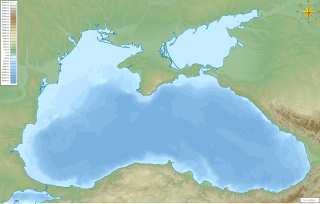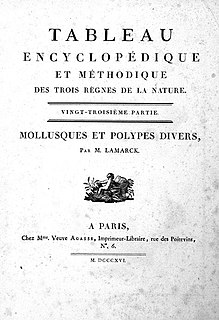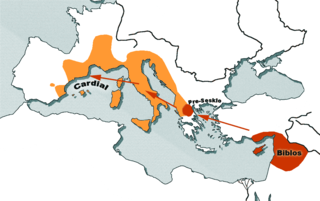| Cerastoderma glaucum | |
|---|---|
 | |
| Scientific classification | |
| Kingdom: | Animalia |
| Phylum: | Mollusca |
| Class: | Bivalvia |
| Order: | Veneroida |
| Family: | Cardiidae |
| Genus: | Cerastoderma |
| Species: | C. glaucum |
| Binomial name | |
| Cerastoderma glaucum (Bruguière, 1789) [1] | |
| Synonyms | |
Cardium glaucum Poiret, 1789 | |
The lagoon cockle (Cerastoderma glaucum) is a species of saltwater clam, a marine bivalve mollusc in the family Cardiidae, the cockles.
In biology, a species ( ) is the basic unit of classification and a taxonomic rank of an organism, as well as a unit of biodiversity. A species is often defined as the largest group of organisms in which any two individuals of the appropriate sexes or mating types can produce fertile offspring, typically by sexual reproduction. Other ways of defining species include their karyotype, DNA sequence, morphology, behaviour or ecological niche. In addition, paleontologists use the concept of the chronospecies since fossil reproduction cannot be examined. While these definitions may seem adequate, when looked at more closely they represent problematic species concepts. For example, the boundaries between closely related species become unclear with hybridisation, in a species complex of hundreds of similar microspecies, and in a ring species. Also, among organisms that reproduce only asexually, the concept of a reproductive species breaks down, and each clone is potentially a microspecies.

Clam is a common name for several kinds of bivalve molluscs. The word is often applied only to those that are edible and live as infauna, spending most of their lives partially buried in the sand of the ocean floor. Clams have two shells of equal size connected by two adductor muscles and have a powerful burrowing foot. Clams in the culinary sense do not live attached to a substrate and do not live near the bottom. In culinary usage, clams are commonly eaten marine bivalves, as in clam digging and the resulting soup, clam chowder. Many edible clams such as palourde clams are oval or triangular; however, razor clams have an elongated parallel-sided shell, suggesting an old-fashioned straight razor.
This species is found along the coasts of Europe and North Africa, including the Mediterranean and Black Seas and the Caspian Lake, and the low-salinity Baltic Sea. It is a euryhaline species living in salinities 4-100 ‰. [2] [3] In north-west Europe (including the British Isles), it typically does not live on open shores but rather in shallow burrows in saline lagoons, or sometimes on lower shores in estuaries. It cannot tolerate significant exposure to the air. The form found in lagoons is thinner-shelled than the estuarine populations. [4]

The Mediterranean Sea is a sea connected to the Atlantic Ocean, surrounded by the Mediterranean Basin and almost completely enclosed by land: on the north by Southern Europe and Anatolia, on the south by North Africa and on the east by the Levant. Although the sea is sometimes considered a part of the Atlantic Ocean, it is usually identified as a separate body of water. Geological evidence indicates that around 5.9 million years ago, the Mediterranean was cut off from the Atlantic and was partly or completely desiccated over a period of some 600,000 years, the Messinian salinity crisis, before being refilled by the Zanclean flood about 5.3 million years ago.

The Black Sea is a body of water and marginal sea of the Atlantic Ocean between the Balkans, Eastern Europe, the Caucasus, and Western Asia. It is supplied by a number of major rivers, such as the Danube, Dnieper, Southern Bug, Dniester, Don, and the Rioni. Many countries drain into the Black Sea, including Austria, Belarus, Bosnia and Herzegovina, Bulgaria, Croatia, Czech Republic, Georgia, Germany, Hungary, Moldova, Poland, Romania, Russia, Serbia, Slovakia, Slovenia, Turkey and Ukraine.

The Baltic Sea is a marginal sea of the Atlantic Ocean, enclosed by Denmark, Estonia, Finland, Latvia, Lithuania, Sweden, northeast Germany, Poland, Russia and the North and Central European Plain.
The lagoon cockle can grow to the length of 50 mm. In north-west Europe, it spawns in May–July, and the planktonic larval phase takes 11–30 days. The life span of the settled cockle is typically 2–5 years. [4]

Plankton are the diverse collection of organisms that live in large bodies of water and are unable to swim against a current. The individual organisms constituting plankton are called plankters. They provide a crucial source of food to many large aquatic organisms, such as fish and whales.
The species was described as Cardium glaucum in 1789 almost simultaneously both by Bruguière and by Poiret. [1]

Jean Guillaume Bruguière (1749–1798) was a French physician, zoologist and diplomat.
Jean Louis Marie Poiret was a French clergyman, botanist and explorer.














